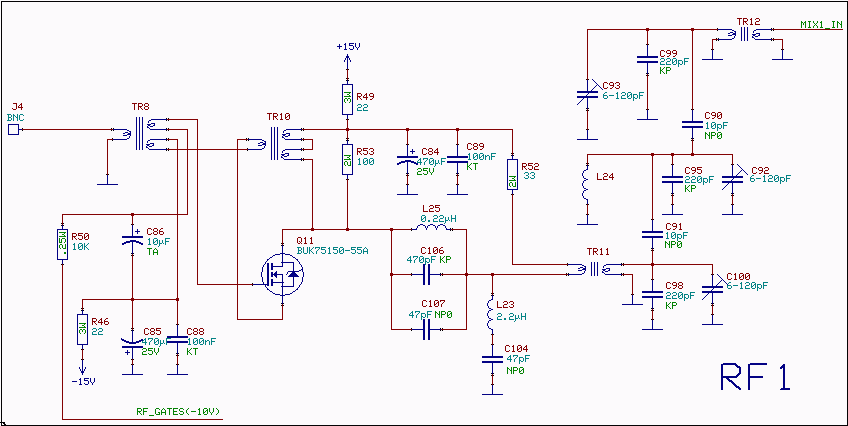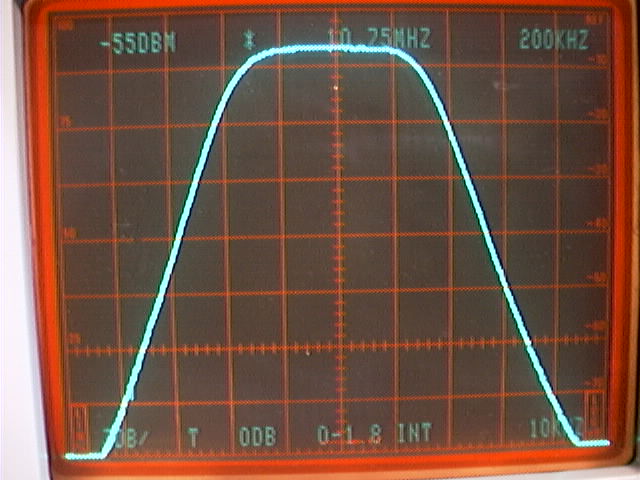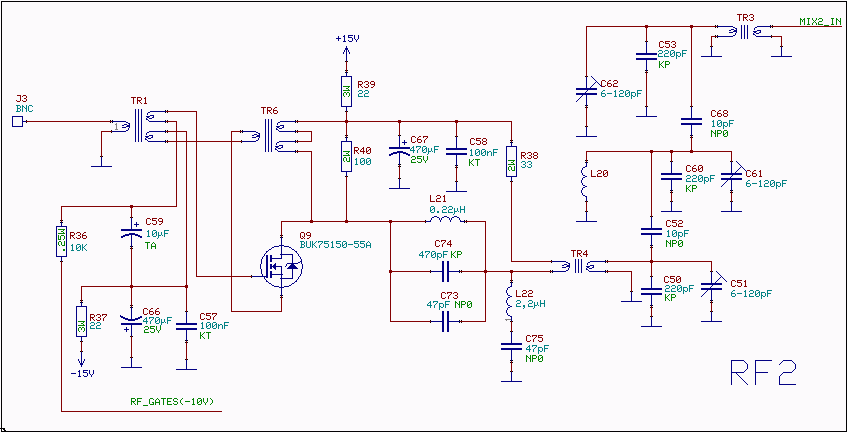The RF amplifierThe RF amplifier is similar to the one used in the 2.5MHz amplifier. At a frequency of 10MHz the capacitances of a power MOS-FET become significant. Noiseless feedback by the use of transformers is no longer straightforward. Intermodulation and overtones are caused by the variation of the capacitances with the voltage. Performance is adequate if a MOS-FET with high enough channel resistance is selected (with associated small capacitances).The input IP3 of the RF amplifier is in the order of +45dBm which is high enough to make the 10.7 to 2.5MHz converter dominated by IM3 from the mixer. The entire unit has an input IP3 of about +40dBm. The gate transformer, TR8, is wound on a ferrite toroid core from Ferroxcube (Philips). Material 4C65, type TN 14/9/5. The gate winding is 6 turns, the source winding is 3 turns and the input winding is 7 turns. The wire dimension is uncritical. The drain transformer, TR10, is wound on a ferrite toroid core from Ferroxcube (Philips). Material 4C65, type TN 14/9/5. The winding is 6 turns with three twisted wires. The wire dimension is uncritical. |



